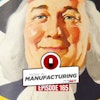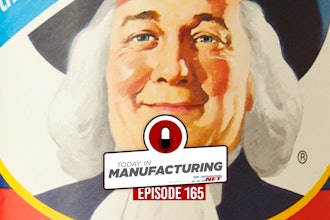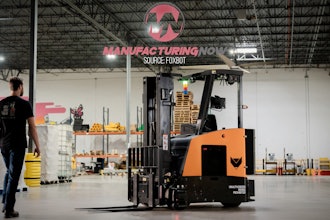It takes careful planning, technical expertise, and collaboration to bring to market a functional, reliable medical device that meets the industry’s stringent standards and end-use demands. While the entire process can be complex, product development teams can streamline it and improve time-to-market by working closely with a material supplier that can help with initial specification, product fitness for use evaluation, and processing and molding technical assistance.
Working Together for Material Selection
On average, it takes about 18-to-24 months to bring a new medical product to market. Typical product development lasts 12-to-18 months, with an additional three-to-six months for regulatory approval.
The development process can take even longer for brand owners that do not have adequate information about material options and applicability for proper functionality of devices from the onset. Trying to use a material that doesn’t fit the device’s design and function could result in significant delays due to processing disruptions, and difficulty meeting fitness for use or anticipated regulatory requirements. The roadblocks can lead to testing other materials during the development cycle, further delaying the process and introduction of the device into the market.
An important step in initial collaboration includes the evaluation of the device’s intended functionality and environment. By providing an evaluation of properties, suppliers can suggest materials with the durability, device clarity, chemical resistance, and processability requirements necessary meet device design specifications.
For example, selecting a highly durable material can ensure that a device is less prone to stress cracking and functional deteriorations when it comes in contact with blood, lipids, chemical agents, and bonding solvents.
Putting the Material to the Test
Material suppliers can provide a range of mechanical testing data to help brand owners better understand the applicability of a material for the given device. A material supplier’s team of scientists, mechanical engineers, and technical service representatives can provide data — such as a mold flow analysis, chemical resistance, and aging — that can aid a brand owners’ device development team in anticipating any potential issue during actual use of the device.
In anticipation of the regulatory approval processes such as 510(k) submission for the U.S. Food and Drug Administration (FDA), material biocompatibility data from the material supplier aids brand owners in the overall regulatory device approval process. For medical devices, biocompatibility studies must be performed on the materials that make up a product, as well as on the actual device. If the material passes all required testing, the end product likely will, too.
Getting Molding & Processing Right
Having a material supplier on-site at a manufacturer’s facility can be invaluable. Experts can quickly identify if existing molds can be utilized, and evaluate if the mold has adequate gating, injection, venting, and cooling properties for the desired application. In as little as one trial, material suppliers can understand if any modifications are required to make the molding process run smoothly, and help educate manufacturers to oversee future product runs. On-site technicians can also help train manufacturers to ensure the material is processed correctly on subsequent runs to help minimize manufacturing disruptions and scrap.
Early involvement also helps optimize potential processing issues. The device design, mold, and process should be as comprehensive as possible to ensure a reliable finished product. Once a material has been selected, suppliers with a solid understanding of its characteristics can assist with molding and provide processing capabilities.
The material supplier’s design engineering team can provide certain review steps in the production process. A part design review can assist in ensuring part strength (e.g., uniform wall thickness) as well as verify that unique part features are properly designed. A tooling review helps make certain that the type of feed system (hot or cold runner), gate design (hot or cold gates), cooling line arrangement, and venting and ejection systems are matched to adequately process the selected material.
The value add of design and processing support services from a material supplier can help simulate processing and all phases of the molding process, including filling, packing, cooling, and warping. The design simulation can also optimize gate location and identify problem areas, such as air traps or weld lines. Simulation can help ascertain fill-pressure requirements for the proposed part geometry and selected plastic; review the proposed cooling line layout to target potential cycle time reduction; and determine other mold-filling attributes.
Regardless of where the product is in the development process, open lines of communication between the brand owner, product development team, and the material supplier are essential to launching or reintroducing a medical device into the industry as quickly as possible.
Case In Point
When medical device company Nephros recently began exploring ways to improve two of its hemodiafiltration filters, it turned to Eastman Chemical for support. Nephros wanted to reduce yellowing that occurred after radiation sterilization, improve the manufacturing process, and provide a product free of bisphenol A (BPA).
Together, the companies worked to utilize Eastman Tritan copolyester and existing polycarbonate (PC) molds for the filters. Given the attributes of the Tritan material, they were able to eliminate the separate annealing processes required with PC due to the lower inherent residual stress of the copolyester.
In addition to the newly BPA-free design, the devices offer superior clarity and less yellowing after radiation sterilization. The new Nephros filters are anticipated to be introduced in Europe and Canada in the fourth quarter of 2011.
LiNA Medical offers another example. The company manufactures a single-use device for minimally invasive gynecological procedures made with a copolyester material.
LiNA sought a material with higher-flow processing capabilities for an application with thin walls and multiple cavities.
Based on LiNA’s previous experience working with Eastman’s copolyester during the redesign of the gynecological device, Tritan was its first choice for the development of a new trocar system designed to complement laparoscopic surgical procedures.
The toughness, heat, and chemical resistance of the material allowed both devices to meet accelerated-aging protocols and withstand ethylene oxide (EtO) sterilization. As a result of the collaboration, the redesign’s time-to-market was substantially reduced.
As seen in the medical market, it’s clear that when brand owners work closely with material suppliers, overall time-to-market can be reduced through the efficient sharing of resources and expertise.
Kenneth E. Breeding Jr. is the technical platform manager of medical devices, specialty plastics at Eastman Chemical Company. Gopal R. Saraiya is the global segment leader of medical devices, specialty plastics at Eastman Chemical Company.






















